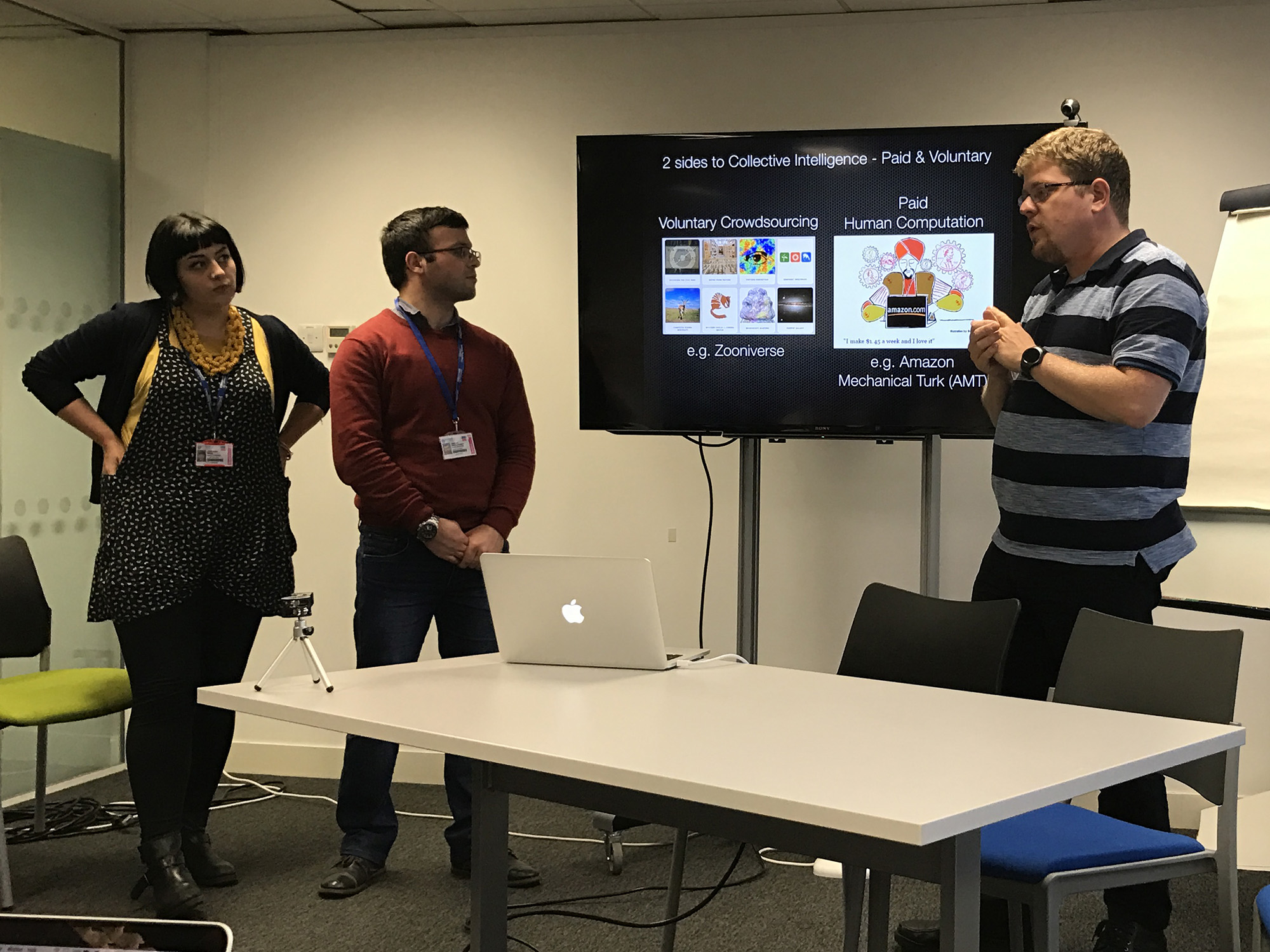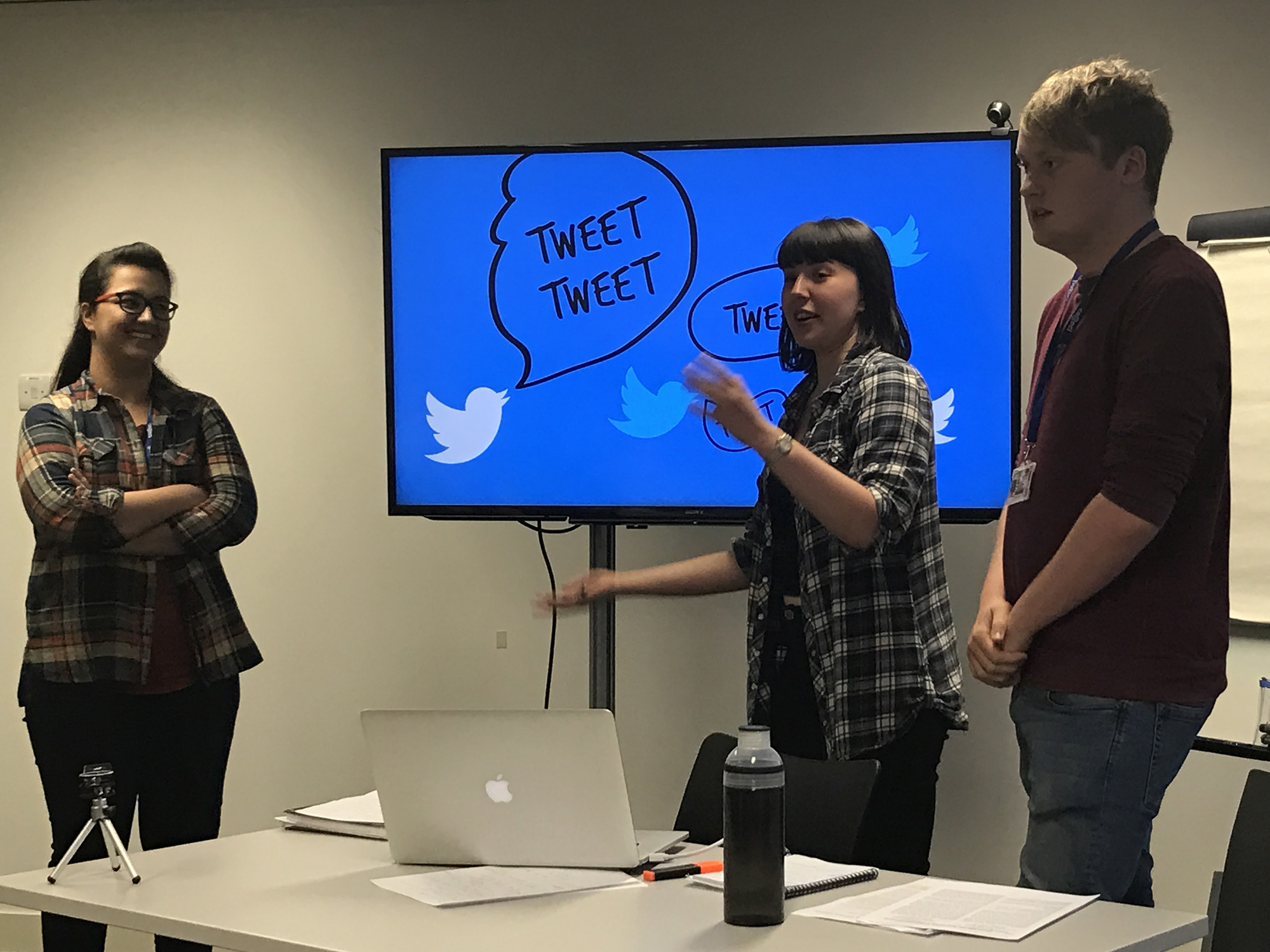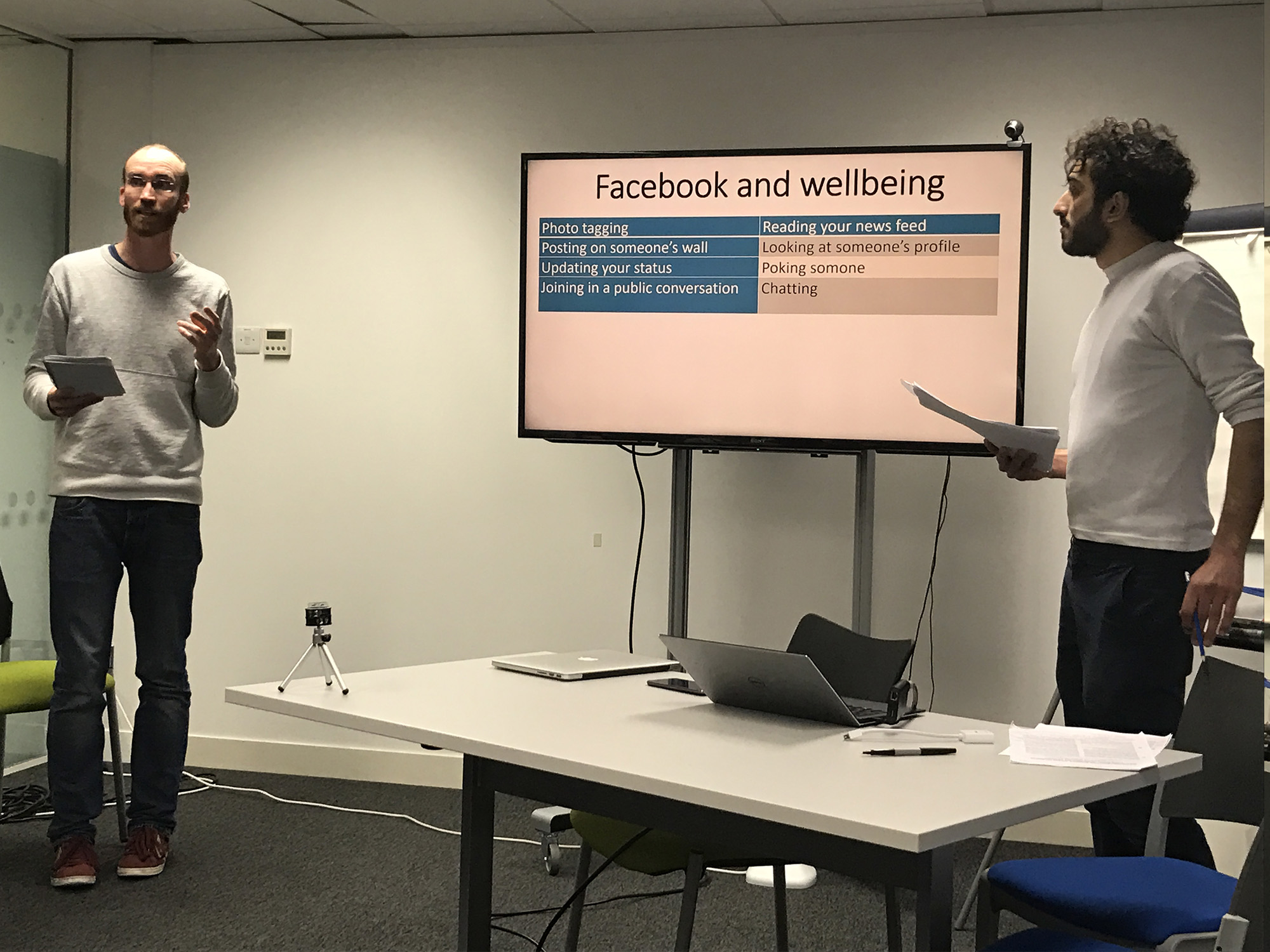Week 5: Alone Together
Today’s session focused on groups preparing a set of short “micro-teaching” exercises on topics related to, very broadly, “social computing”. Each group was associated with a different sub-area of social computing research, and each group member had a different paper to read related to this topic in their group:
Group 1, Crowdsourcing and Human Computation: Dinislam, Alex, Lydia
Group 2, Facebook: Mo, Tom, Sebastian
Group 3, Twitter: Dalya, Rosie, Sean
Group 4, Vids and Pics: Dan, Sarah, Shichao
Everyone worked in their own group to develop their short, 6 minute long, “micro-lecture” on their group’s topic. These were then delivered at the end of the session:



Tasks for Week 5:
For next week there is no set reading but there is set viewing. We want you all to watch this 20-year-old video of Brigg Ullmer’s PhD defence on tangible user interfaces. Brigg’s work (with his supervisor Hiroshi Ishii) was foundational to the sub-field of tangible interaction. We would like you to watch this to get a sense of what tangible interaction is, and how TUIs (tangible user interfaces) are distinctive from GUIs (graphic user interfaces).
In next week’s session you will playing the role of Session Chairs for a fictional conference:
“You are all co-chairs of a fictional one-day conference we are running called Tangible Computing: The Past, Present and Future. Your task in the HCI session is to come up with an interesting and engaging programme for the conference that covers the history, latest work, and future of this area of HCI research.”
We have assigned you into groups where you will be acting as “session chairs” for specific parts of our conference on particular themes:
Theory and Philosophy: Rosie, Sarah, Daniel and Sean
Awesome New Interfaces: Alex, Dalya, Dinislam and Mohyddin
Histories and Futures: Tom, Lydia, Shichao and Sebastian
As well as viewing the Ullmer video, we would also like you to individually identify up to three publications (but not be compelled to read them) that you think would be interesting for the sessions you are chairing. These are simply to seed some of your group discussions next week and there is no need to be in a position to do critique of these papers. To help with this I have produced a range of additional useful literature and resources on physical and tangible and embodied interaction here (you can, if you want, take straight from these).
As usual write a weekly blog post. This week, tell us: 1) what you think Tangible, Physical and Embodied Computing is, and how it’s different to other areas of HCI research, and 2) what three papers you have chosen, where you found them and why you have chosen them.